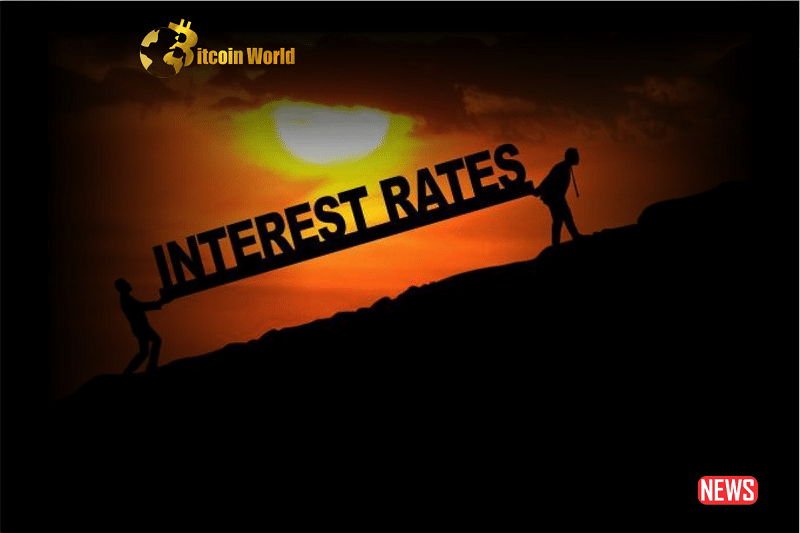Ever wondered where a chunk of your tax dollars goes? Well, a new report highlights a growing financial challenge for the US government: soaring interest payments. The Peter G. Peterson Foundation, established by the late billionaire, is sounding the alarm, projecting that the US government’s interest bill will exceed a staggering half a trillion dollars this year. That’s a pretty big number! To put it in perspective, total government payments are expected to hit $6.4 trillion, an $81 billion jump from last year. What’s fueling this surge? Let’s dive in.
Why Are Interest Payments Skyrocketing? The Fed’s Role
Think of it like this: when you borrow money, you pay interest. The US government, with its substantial national debt, is no different. The Federal Reserve (the Fed), the central bank of the United States, has been on a mission to combat inflation by raising interest rates. In fact, they’ve hiked rates a whopping 10 times in just 14 months, pushing the benchmark interest rate to 5.08%. That’s the highest it’s been since 2007!
What does this mean for the government’s wallet? According to the Peterson Foundation, these rate hikes alone will cost the US government an extra $187 billion in interest payments this year. That’s a significant sum that could be used for other public services.
Breaking Down the Numbers: What Does $663 Billion Look Like?
Let’s get down to the nitty-gritty. The Peterson Foundation forecasts that interest payments on the federal debt will reach a hefty $663 billion in 2023. That’s about 2.5% of the entire US Gross Domestic Product (GDP). To illustrate this growth:
- 2022: $476 billion in interest payments
- 2023 (Projected): $663 billion in interest payments
- Increase: A whopping 39%!
The primary culprit? Higher interest rates, a direct consequence of the Fed’s efforts to tame inflation. It’s a balancing act – trying to control rising prices while managing the cost of the national debt.
The Elephant in the Room: The Growing National Debt
Now, let’s talk about the big picture: the national debt. Currently, the US government owes over $32.17 trillion. Yes, that’s trillions with a ‘t’! And unfortunately, projections suggest this number isn’t going to shrink anytime soon. Some forecasts predict the gross national debt could balloon to nearly $52 trillion within the next decade.
Think of it like this:
- Rising Interest Rates: Like paying a higher interest rate on your mortgage.
- Ballooning Debt: Like taking out an even bigger mortgage.
Combine these two, and you’ve got a recipe for significant financial challenges.
What Are the Implications? Why Should You Care?
So, why should you care about these rising interest payments? Here’s the breakdown:
- Strain on the Budget: Every dollar spent on interest payments is a dollar that can’t be used for other essential programs like education, infrastructure, or healthcare.
- Future Generations: A large national debt and high interest payments can burden future generations with a significant financial obligation.
- Economic Growth: High debt levels can potentially slow down economic growth in the long run.
Navigating the Financial Tightrope: What Can Be Done?
The Peterson Foundation’s report isn’t just about stating the problem; it’s a call to action. So, what can be done to address this challenge?
- Fiscal Responsibility: Implementing responsible budgeting and spending policies is crucial to manage the debt.
- Economic Growth Strategies: Policies that promote sustainable economic growth can help increase government revenue.
- Careful Consideration of Monetary Policy: While controlling inflation is important, the impact of interest rate hikes on the national debt needs careful consideration.
The Bottom Line: A Call for Fiscal Prudence
The stark reality is that rising interest rates are adding significant pressure to the US government’s finances. The projected interest payments exceeding half a trillion dollars serve as a clear warning. As the national debt continues its upward trajectory, finding effective strategies to manage this debt and mitigate the impact of rising interest rates is paramount. It’s a complex challenge that requires careful planning and a commitment to fiscal responsibility to ensure a stable financial future for the United States.
Disclaimer: The information provided is not trading advice, Bitcoinworld.co.in holds no liability for any investments made based on the information provided on this page. We strongly recommend independent research and/or consultation with a qualified professional before making any investment decisions.


